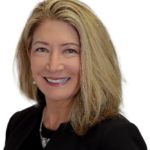
Personal Experiences as Women in Healthcare
This blog originally appeared on the Women in Healthcare blog. You can learn more about the organization here.
Women in Healthcare, as an organization, is “committed to providing women in the healthcare industry with the community and tools needed to prosper and to allow them to have a seat at the table they want to be seated.” Over the past few years, female colleagues from across SSR have been increasingly drawn to this organization because of the support and mentorship provided. To support, empower, and mentor one another, female engineers, designers, commissioning providers, technology consultants, sustainability experts, and medical equipment planners have contributed their personal experiences as women in healthcare.
 During my 22 years at SSR, I have worked on multiple healthcare projects at Baptist Hospital (now St. Thomas Midtown) in Nashville. I have twice remodeled the floor of the Women’s Center where I was born in 1967. I’ve had two nephews delivered there and experienced the rooms I designed as a guest. My second nephew was born premature by C-section. During his stay, I visited him many times in the NICU. It was an antiquated room with just enough space for a single family member to stand between the bassinets, offered little privacy, and had bright institutional lighting and aged technology – not very endearing to the family experience or the baby. Several years later, I was part of the design team that renovated the NICU and I found myself reflecting on how the renovation not only brought the facility forward with technology, but how it created such a caring environment – not just for the infant, but the entire family. It was significant to me both professionally and personally to work on these projects and improve the facility that has had such an impact on my life.
During my 22 years at SSR, I have worked on multiple healthcare projects at Baptist Hospital (now St. Thomas Midtown) in Nashville. I have twice remodeled the floor of the Women’s Center where I was born in 1967. I’ve had two nephews delivered there and experienced the rooms I designed as a guest. My second nephew was born premature by C-section. During his stay, I visited him many times in the NICU. It was an antiquated room with just enough space for a single family member to stand between the bassinets, offered little privacy, and had bright institutional lighting and aged technology – not very endearing to the family experience or the baby. Several years later, I was part of the design team that renovated the NICU and I found myself reflecting on how the renovation not only brought the facility forward with technology, but how it created such a caring environment – not just for the infant, but the entire family. It was significant to me both professionally and personally to work on these projects and improve the facility that has had such an impact on my life.
Karen Proctor | Project Manager | Nashville

On July 7, 2012 I received the call that no mother wants to receive. My 18-year-old son was involved in a severe car accident. He was critically injured and was being life flighted to Grady Memorial Hospital in Atlanta. The previous year I had been involved in several large projects at Grady, providing advanced technology and equipment placement in the Level 1 Trauma Center and the Marcus Neuro ICU. In the blink of an eye, I went from being a consultant to being on the receiving end of my work.
The experience has allowed me to see the outcome of our work and how our contributions to the completed environment can help or hinder the caregivers. I gained a greater appreciation for the equipment that’s installed. Does it truly serve the intended purpose? Could it hinder the flow of delivering care?
After 33 days, my son left the ICU and began his journey of fighting back to recover his life and opportunities that were taken from him. He is my miracle and fuels my passion for what we do. I have experienced firsthand that the work we do really makes a difference in the lives of patients and their loved ones. It reinforced that nurses and doctors deliver miracles every day and they need to be the forefront of our thoughts and plans on every project.
Debbie Heitzman | Principal | Atlanta
 After a series of unfortunate events and a few years with a technology integrator, I landed a job as a Project Assistant at a Technology Planning Firm in Nashville. One of the first team members I met was Gail. She was a powerful force in all areas of work and life. Gail took the time to teach me the systems, the design and construction process/industry, and how to support the team. She prepared me to become a Technology Consultant. Gail only ever encouraged me and truly wanted to see me fly.
After a series of unfortunate events and a few years with a technology integrator, I landed a job as a Project Assistant at a Technology Planning Firm in Nashville. One of the first team members I met was Gail. She was a powerful force in all areas of work and life. Gail took the time to teach me the systems, the design and construction process/industry, and how to support the team. She prepared me to become a Technology Consultant. Gail only ever encouraged me and truly wanted to see me fly.
Gail is one of many. When I think back to all the women who took the time to mentor and support me, I am overwhelmed with gratitude. The support has naturally encouraged me to pass it on to the young women on my team now, other women working in design and construction, and the friends I have made over the years in this close-knit community. We lift each other up! We celebrate our accomplishments! We care for one another through the challenges. We recognize our unique qualities and role in the industry. The sky in the limit for women in healthcare because of never ending tradition of passing it on.
Linda Sadler, EDAC | Principal | Nashville
 In the design and consulting industry, once a project is completed, we move on to the next. Unless there’s repeat work with the client, we may never visit that facility again. While we develop interprofessional relationships on projects and spend sometimes up to five years on a project, the tensions and balancing of expectations can create a certain anesthetized approach.
In the design and consulting industry, once a project is completed, we move on to the next. Unless there’s repeat work with the client, we may never visit that facility again. While we develop interprofessional relationships on projects and spend sometimes up to five years on a project, the tensions and balancing of expectations can create a certain anesthetized approach.
A few years ago, I received a call from my son that he was being taken to the emergency room of a nearby hospital. Although in another region of the country, I was very familiar with that hospital as I had worked there for two years designing a state-of-the-art emergency department and patient tower. My son was diagnosed with a collapsed lung and was admitted to the hospital. As any mother would do – I went into panic mode. I still had the Chief Nursing Officer’s phone number whom I had worked closely. I sent her a text, “I have a favor – mother to mother, not a business request. Please go to the ED and check on my son.” About 15 minutes later I got a text with a photo of her leaning over my son. My heart relaxed; I knew he was in good hands. He spent over a week in their care. I returned to visit and got to see the hospital from a totally different lens. I felt the caring and concern of a staff that were committed to patient care and family centered care. My daughter-in-law was pregnant at the time and the CNO asked if she would like to see the L&D unit that was brand new. She took her on a personal tour and a few months later my first grandchild was born at the hospital.
This experience forced the project to come full circle and created a much different perspective for me on future projects. If I could teach my “younger self” a lesson it would be:
1) Don’t be anesthetized with the work pace and routine.
2) Work as if those that you are working with will be caring for you or your loved ones one day.
3) Don’t burn any bridges with clients – those may be the same people that lift you up when you need it the most.
Debbie Gregory, DPN, RN | Senior Clinical Consultant | Nashville
 Working in healthcare design and construction was not the way I had envisioned myself as I headed into my senior year of high school – I was going to be a doctor!
Working in healthcare design and construction was not the way I had envisioned myself as I headed into my senior year of high school – I was going to be a doctor!
In my narrow, teenage view of the world, the only perspective I had of healthcare was to be a provider. In 1978, I had worked as a candy striper in my regional hospital. I had loved the sense of doing important work, I wasn’t just flipping burgers at Maid Rite! The doctors, nurses, and staff were always so intent in their work. They were very specific with their instructions and would at times explain technical considerations to me; they were smart, and I wanted to be that!
Although my grades were good, my studies had primarily been in math and physics. I liked these subjects; I did not like biology. Healthcare provider didn’t score high on my guidance counselor’s “placement test,” so becoming a doctor wasn’t in the cards for me. Off to engineering college I went.
As a mechanical engineer for the last 37 years working within healthcare facilities, I have to say that I couldn’t be happier! I wish I understood when I was 18 that important work goes on all over the hospital. There’s work going on behind the scenes, often in the basement, that is imperative to keeping the building operational.
Laura Ludwig, PE, QCxP | Principal | Chicago
 My experience in healthcare has come full circle. I started my career as an engineering consultant, designing mechanical systems for local hospitals that, today, are either being completely renovated or are being considered for replacement. I’m now happily back in consulting engineering after several years working in other markets. During the years in between, I was engaged on construction project development teams and had the opportunity to visualize projects from the initial design intent document to the constructed space. Healthcare projects are especially meaningful, as it’s immensely gratifying to work behind the scenes to create thoughtfully designed environments for patients and staff. While I’ve been fortunate to have played a part on several significant new construction projects, I particularly enjoy working with the client and design teams on those smaller, unique renovation projects that present budget and schedule challenges to modernize their space and systems.
My experience in healthcare has come full circle. I started my career as an engineering consultant, designing mechanical systems for local hospitals that, today, are either being completely renovated or are being considered for replacement. I’m now happily back in consulting engineering after several years working in other markets. During the years in between, I was engaged on construction project development teams and had the opportunity to visualize projects from the initial design intent document to the constructed space. Healthcare projects are especially meaningful, as it’s immensely gratifying to work behind the scenes to create thoughtfully designed environments for patients and staff. While I’ve been fortunate to have played a part on several significant new construction projects, I particularly enjoy working with the client and design teams on those smaller, unique renovation projects that present budget and schedule challenges to modernize their space and systems.
Susan Kramer, PE, LEED AP | Principal | Houston
View Article






